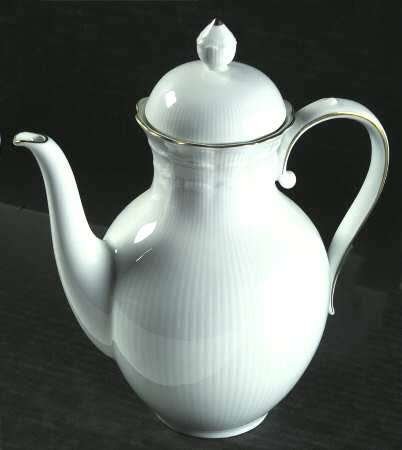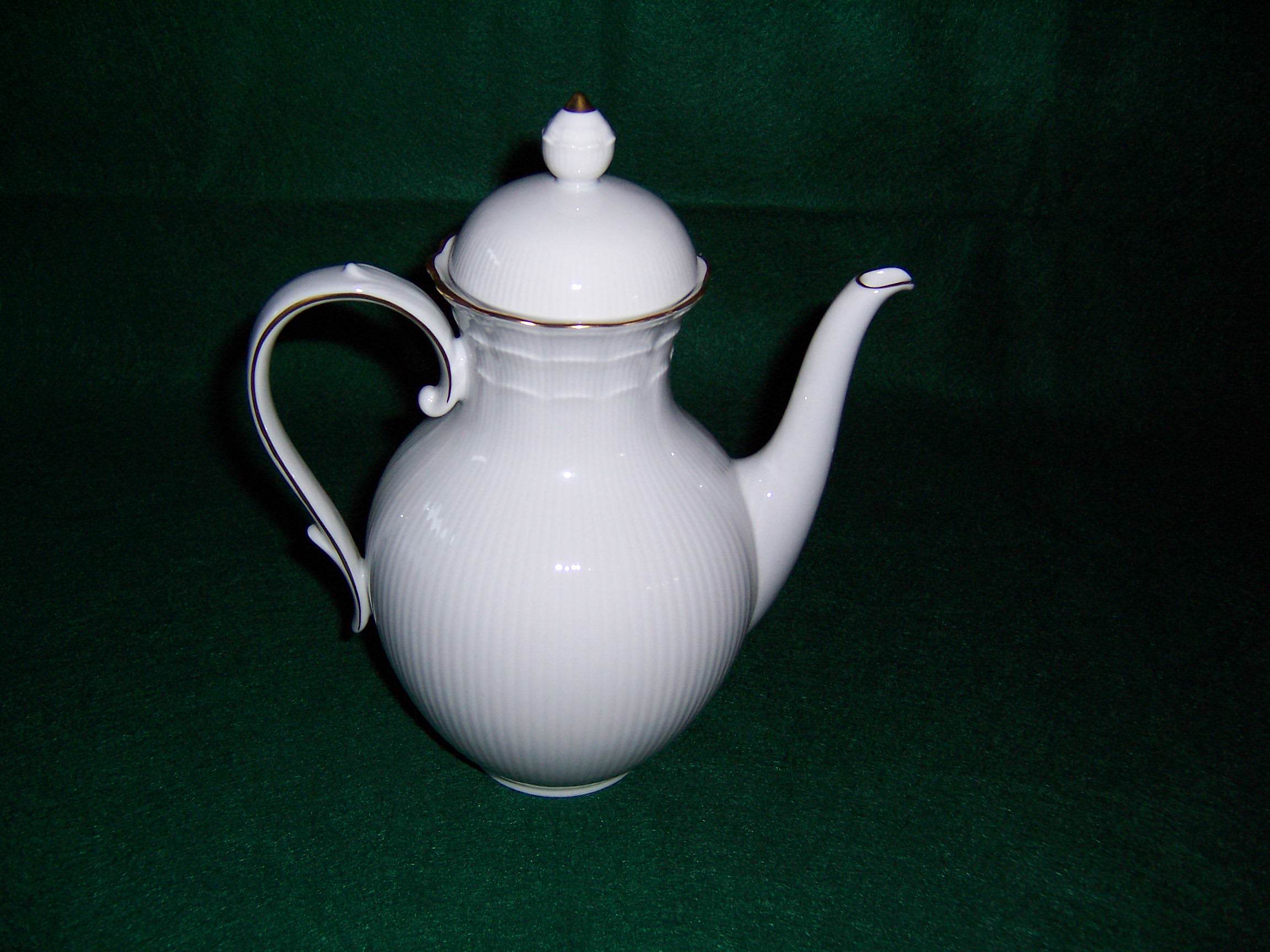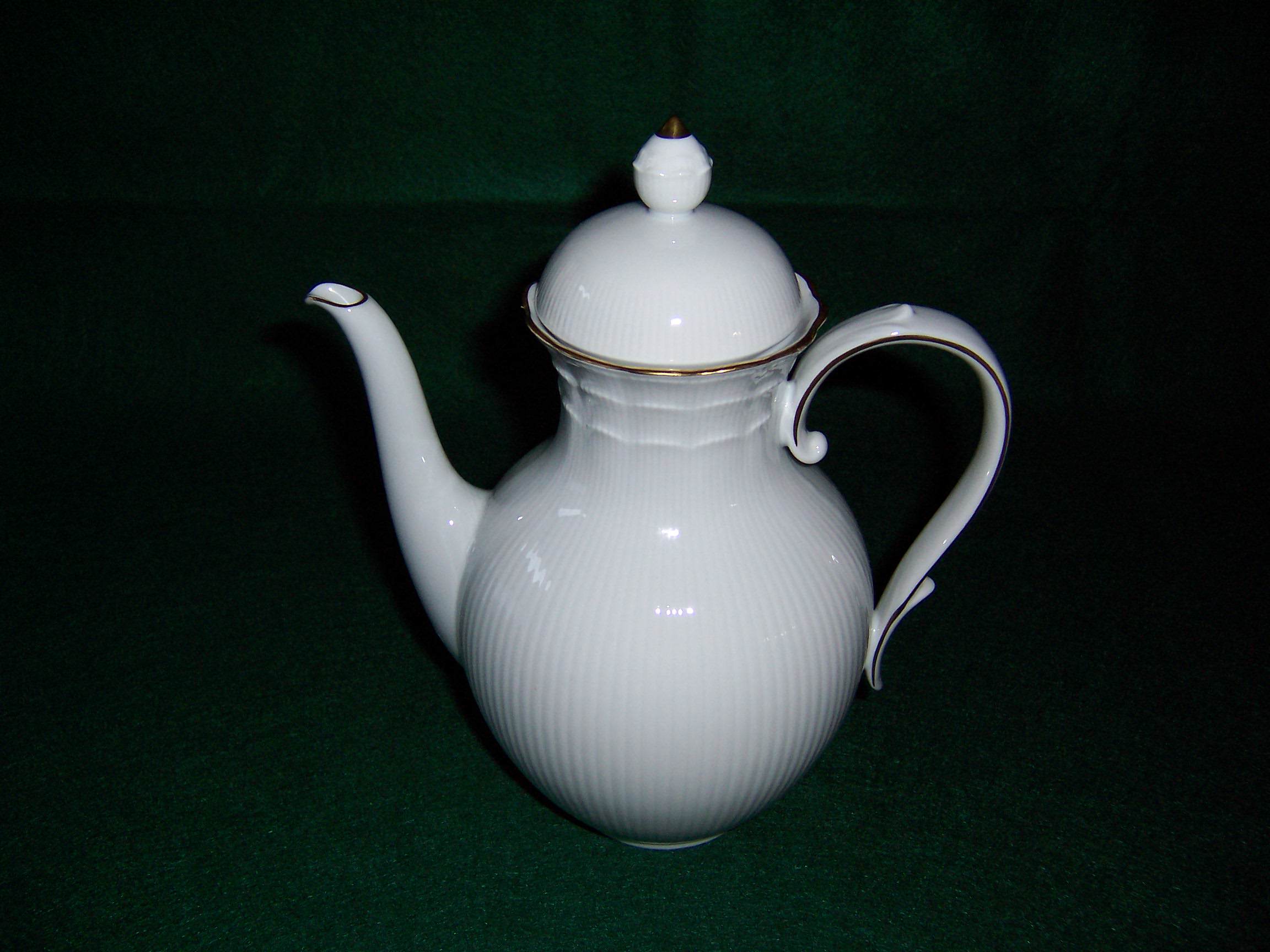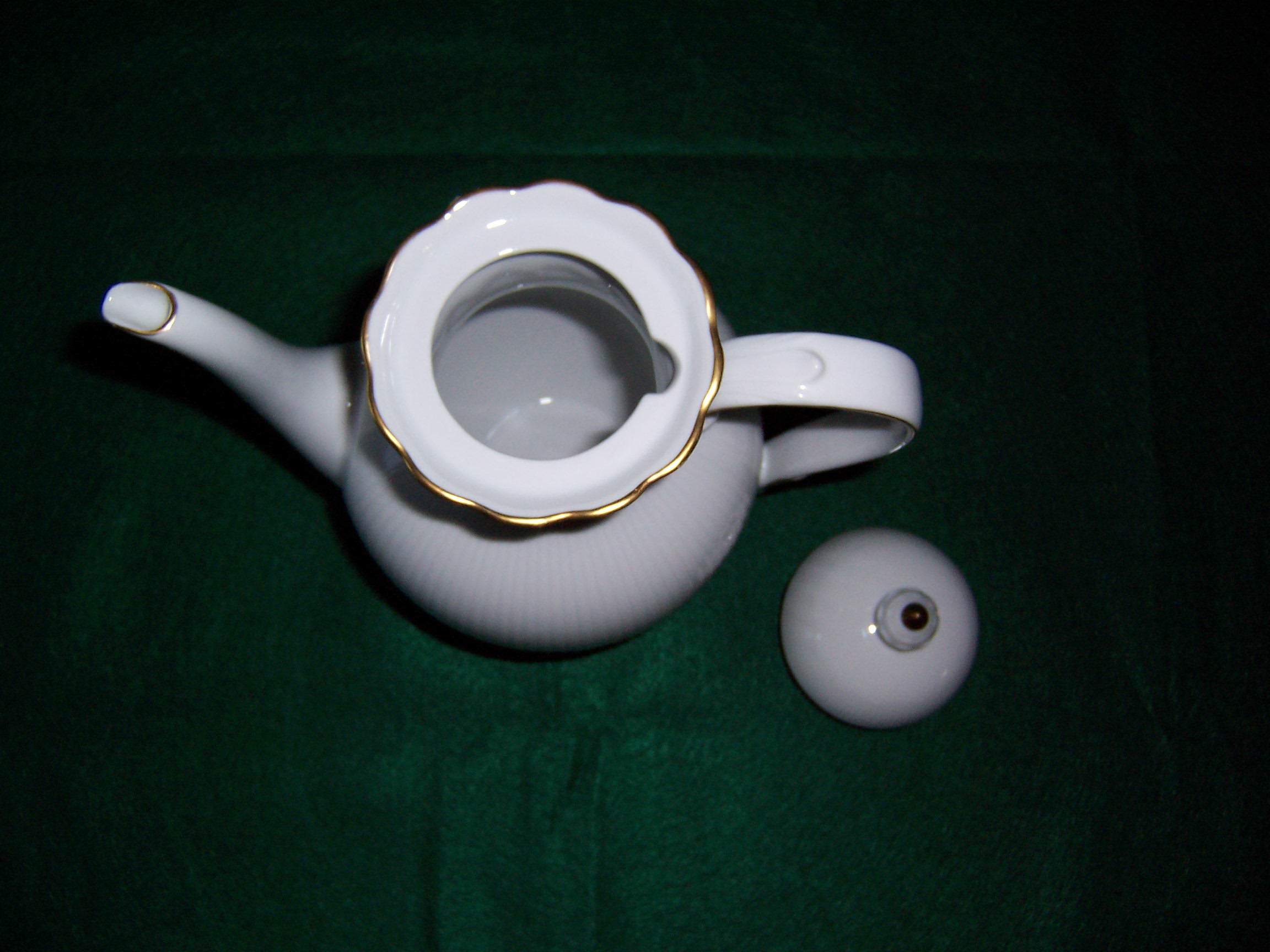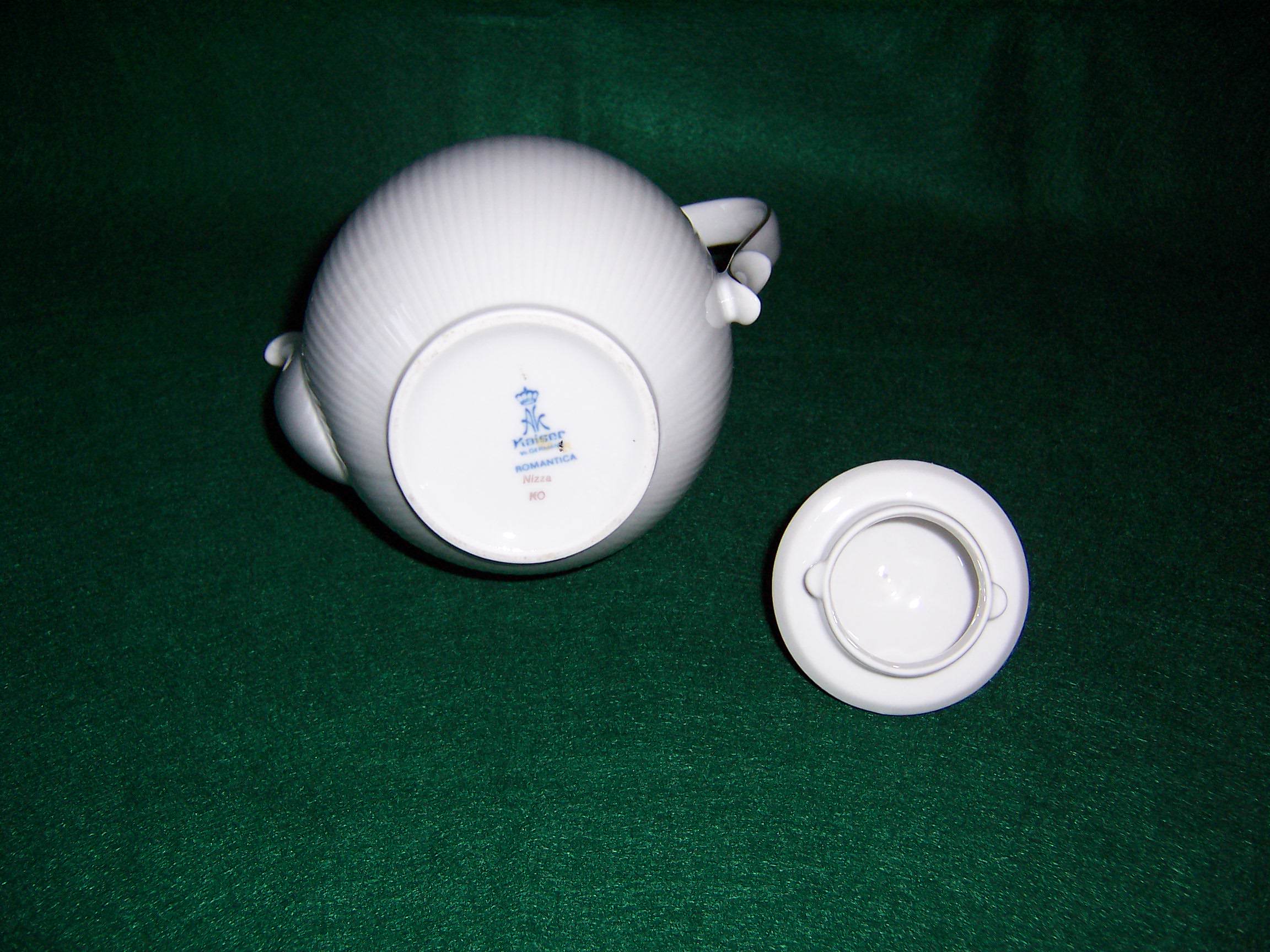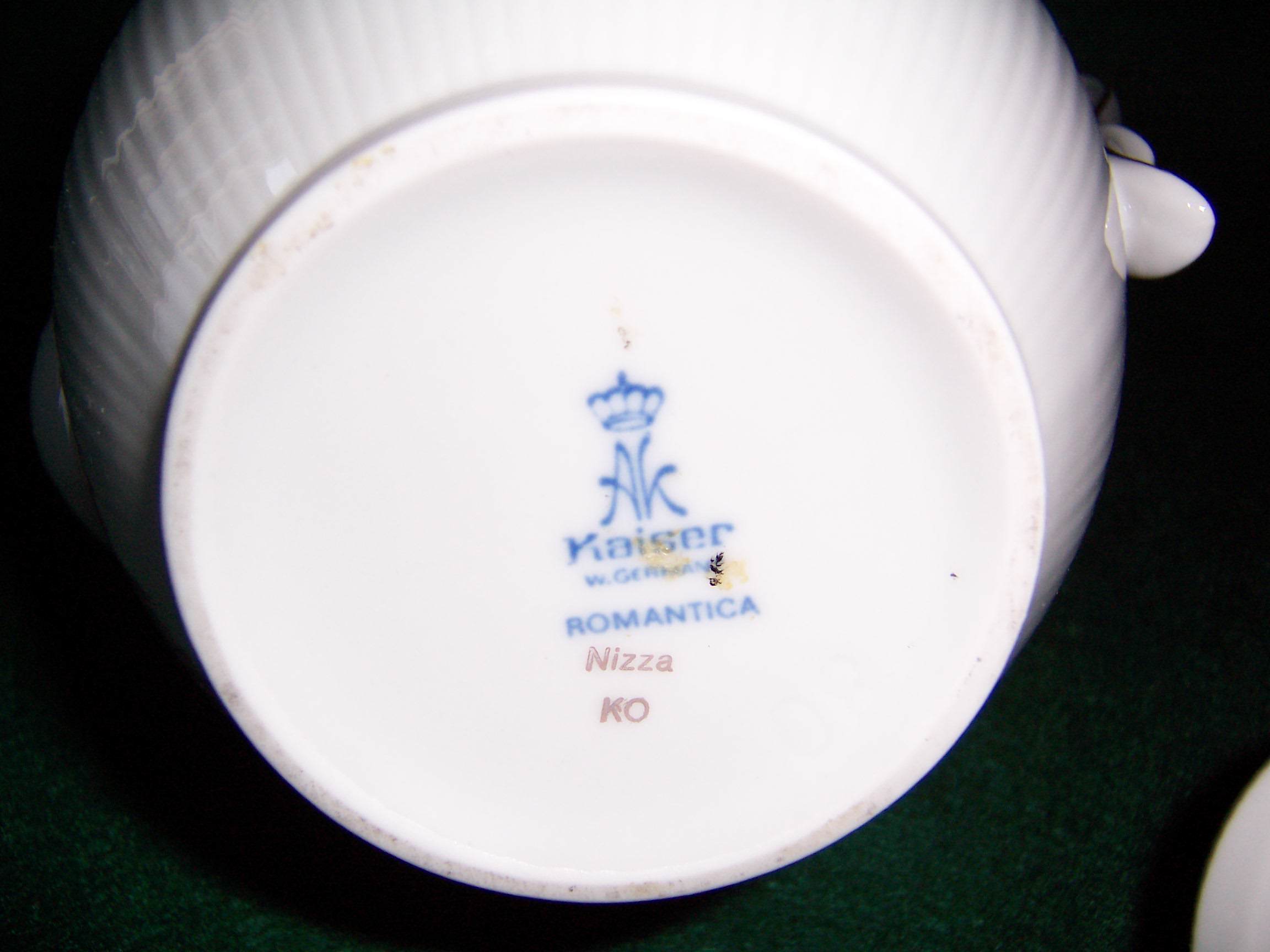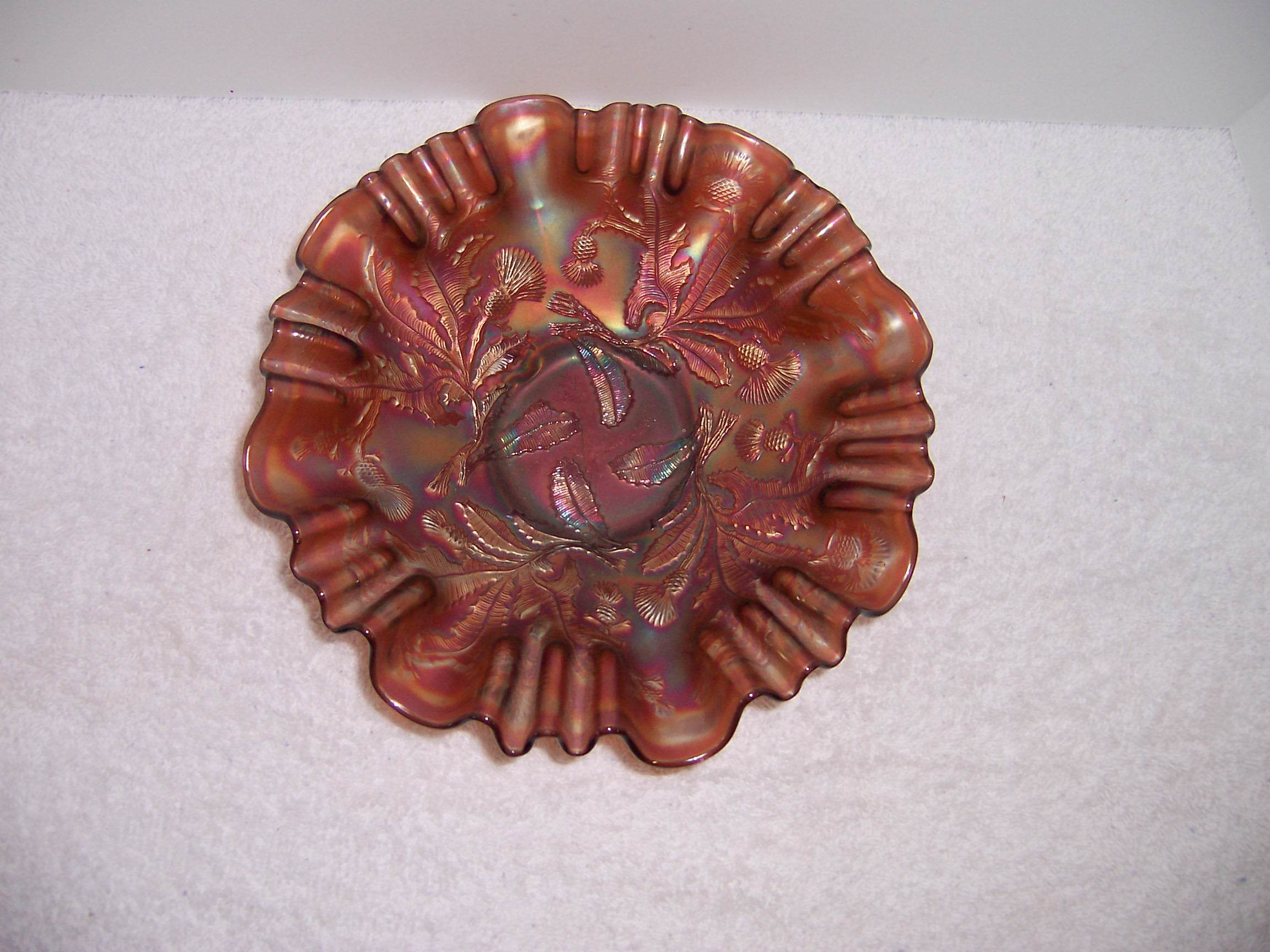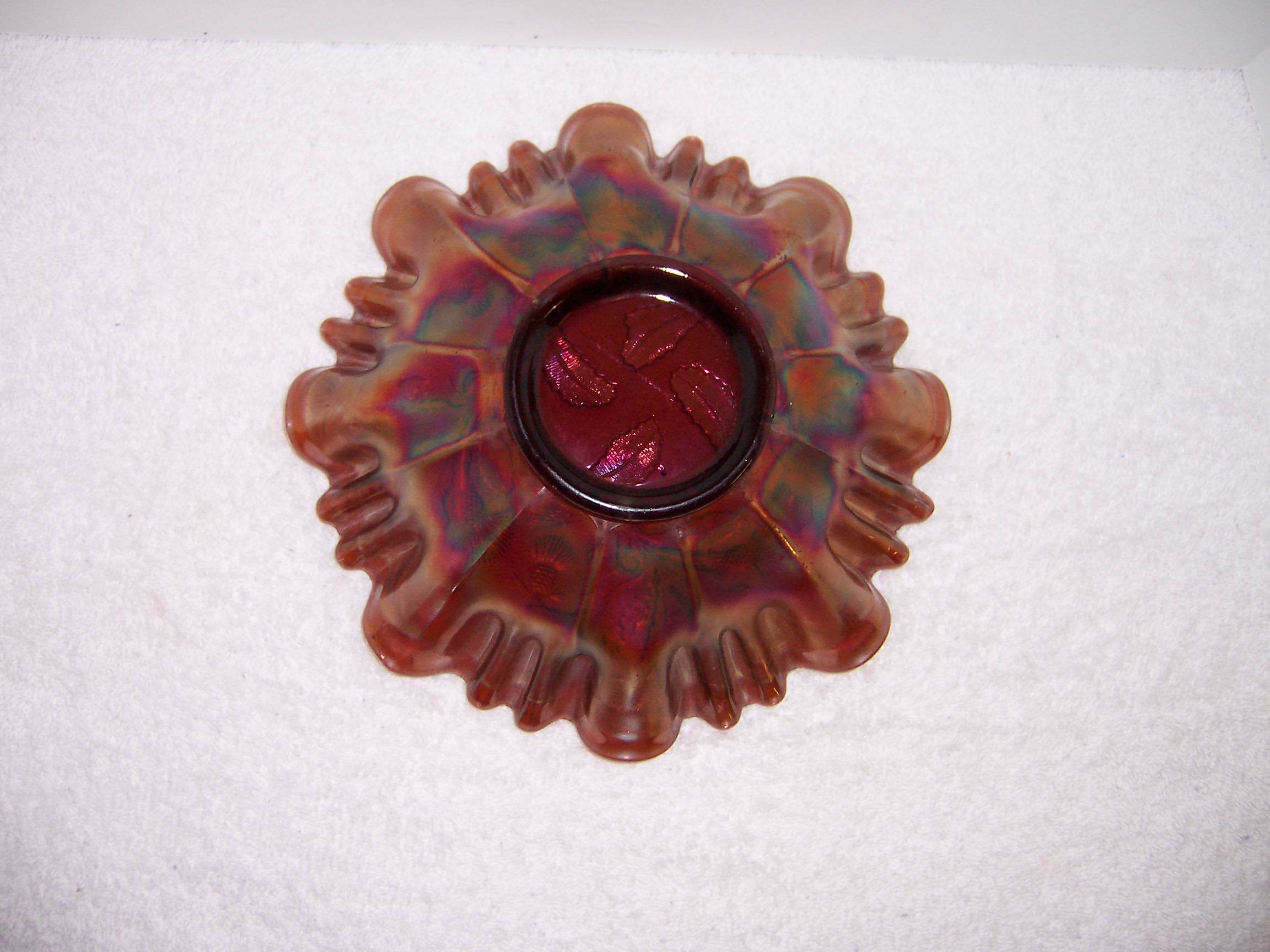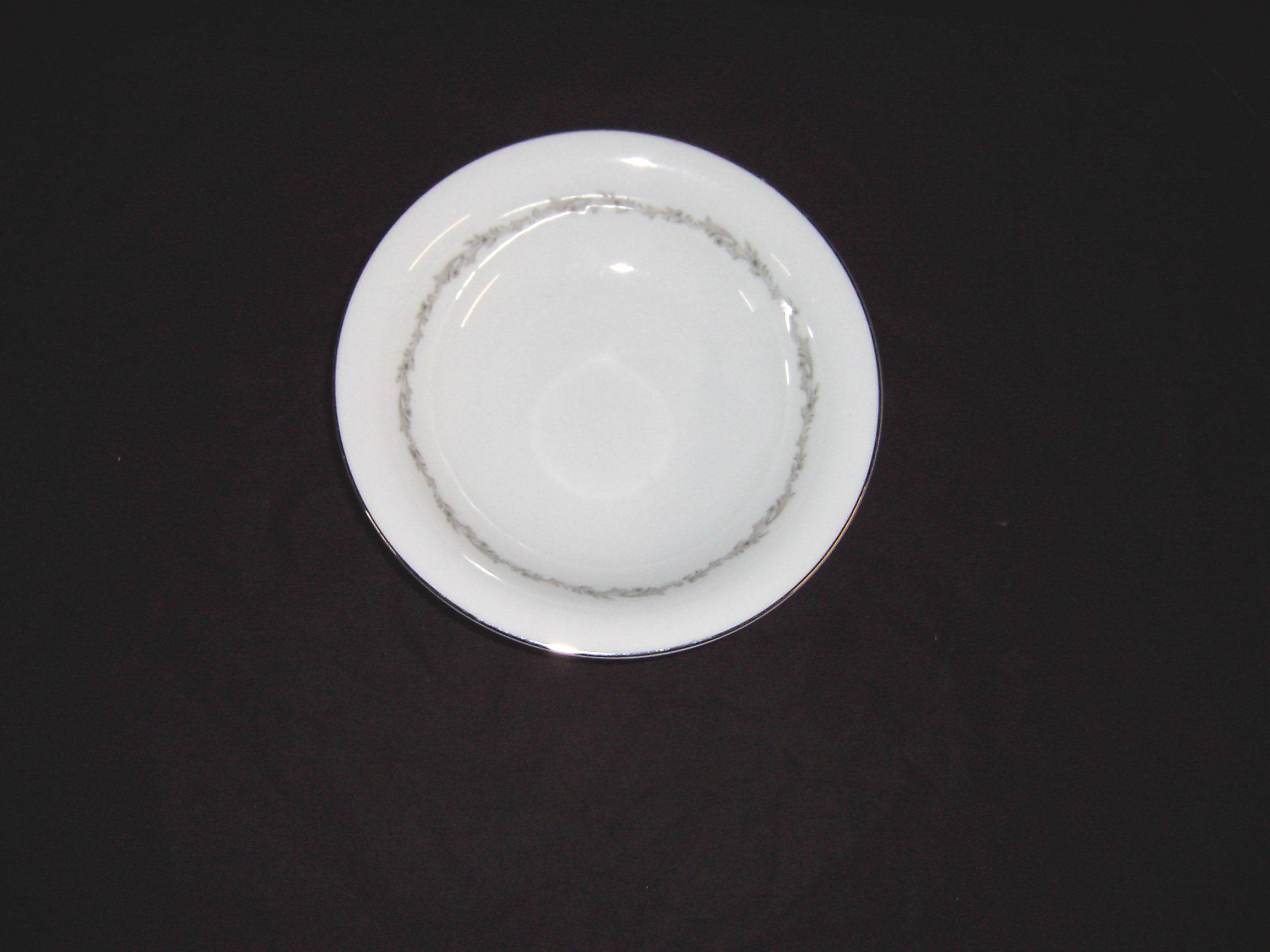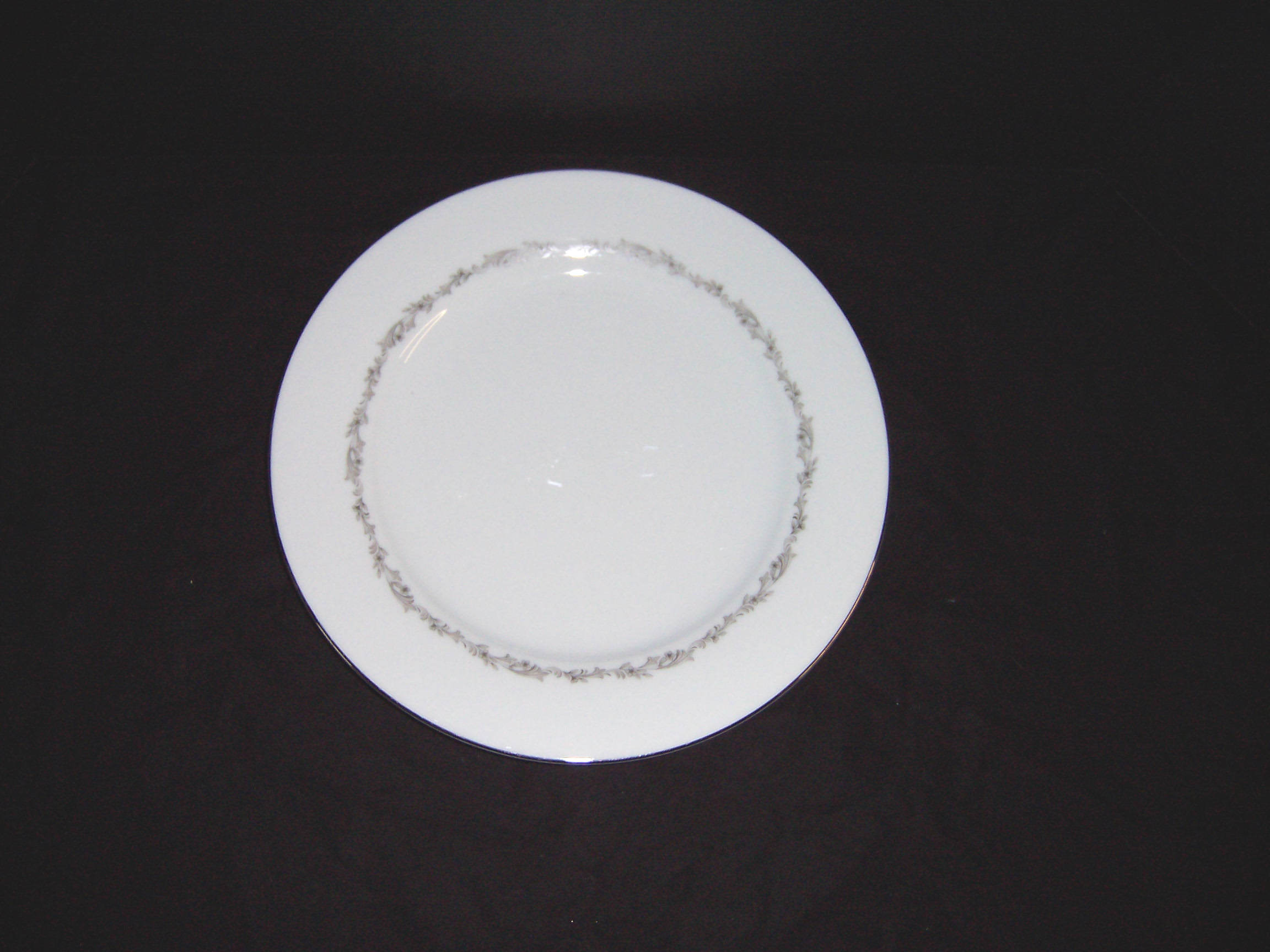Description
Kaiser Nizza Coffee Pot with Lid in great condition. The Coffee Pot measures 9.75″ high x 5 1/8″. Hard Porcelain.
The “White Gold”
The tradition of porcelain (the “White Gold”) in Europe is actually not as old as one might think. Yet porcelain has seemingly always been part of our daily lives, often reminding us of very special moments…a wedding party with a perfectly laid table, a cosy Christmas family get-together, or just an evening with good friends at home. These are memories as special and durable as porcelain itself.
Porcelain’s origin goes back to a time around 1,100 b.c. in China, with porcelain having its “heyday” during the Ming dynasty, between the 14th and 16th century. It came to Europe during the 13th century, brought by the famed Marco Polo, expedition leader and adventurer.
It was in 1708 when the ingredients for porcelain were “invented” in Europe by Ehrenfried Walther von Tschirnhaus. It was his pupil Johann F. Böttger, alchemist at the court of King August the Strong, who actually perfected the formula. Originally he was looking for a way to make gold (to help improve the court’s finances), but he, instead, discovered the secret of porcelain, the “White Gold”.
But it’s not only in Germany that Kaiser Porzellan has gained the reputation of being a synonym for fine porcelain: royalty, as well as famous personalities in politics, sport and entertainment have also become dedicated to our porcelain. So, it is with some pride that we say:
Kaiser Porzellan is V.I.P. … very important porcelain … for life’s beautiful and special moments.
Isn’t life too short not to make every moment a special moment?
• What actually is porcelain?
Porcelain belongs to the large group of materials called “ceramics”, which are products made mainly of clay or clay raw materials with mineral content. Ceramics range in texture from coarse, such as plain clay tile, to progressively finer products such as earthenware, majolica, faience, and stoneware, to porcelain – the finest textured of all ceramics. Porcelain consists of two main parts: 1) the compound, or body, and 2) the glaze. The composition of the body’s glaze is equivalent to glass. The compound, or in its fired state called “body” consists of 65-80% glass, in which tiny quartz crystals are embedded. The white, glassy paste used to make the body accounts for porcelain’s translucence and differentiates it from stoneware.
• Are there different types of porcelain?
There are two types of porcelain: hard porcelain and soft porcelain. Hard porcelain is produced mainly on the European continent. Soft porcelain is produced predominantly in China, Japan, and England.
• What is hard porcelain?
In Germany, mostly hard porcelain is made. Its main characteristic is a high percentage of kaolin (50%) and its feldspar icing, which only melts at a temperature of 1,400 – 1,500 degrees C. At the same time the body underneath “centers”, that is, the small particles of porcelain connect with each other. This leads to an extraordinary hardness of the glaze, as well strength of the body.

